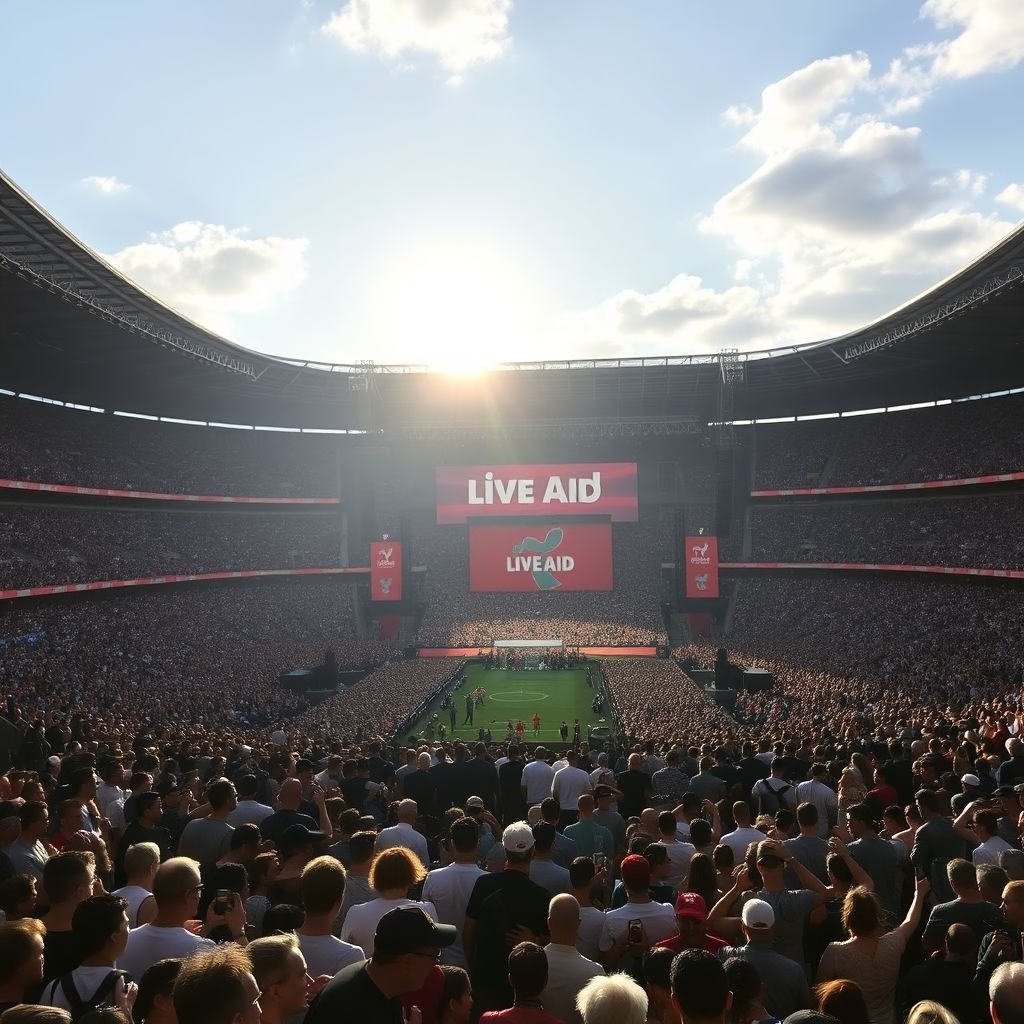Live Aid: The Concert That Changed the World (and Raised Millions)

Live Aid: A Concert for a Cause
In the annals of music history, certain moments stand out, not just for their artistry, but for their profound impact on the world. Live Aid, held on July 13, 1985, is undeniably one of them. Organized by Bob Geldof and Midge Ure, the concert was a global phenomenon, a testament to the power of music and a beacon of hope in the face of unimaginable suffering. Its primary aim was to raise funds for famine relief in Ethiopia, a country ravaged by drought and hunger.
A Global Spectacle
The scale of Live Aid was unprecedented. Taking place simultaneously at Wembley Stadium in London and JFK Stadium in Philadelphia, the event was broadcast to an estimated 1.9 billion people across 150 nations. This made it one of the largest television broadcasts in history, uniting a global audience in a shared experience. The concert featured a stellar lineup of music icons, including Queen, U2, David Bowie, and many more, all performing for free to support the cause.
The Genesis of a Movement
Live Aid wasn’t born in a vacuum. It followed the phenomenal success of the Band Aid single, “Do They Know It’s Christmas?”, a collaborative effort spearheaded by Bob Geldof in response to the Ethiopian famine. This song, featuring a multitude of prominent musicians, also raised substantial funds and, crucially, heightened awareness of the crisis. It set the stage for the even more ambitious undertaking that was Live Aid.
The Day the Music Played On
The energy at both venues was palpable. In London, the crowd roared as Queen delivered a legendary performance, widely considered one of the greatest live sets in rock history. Across the Atlantic in Philadelphia, artists like Mick Jagger and Tina Turner graced the stage, adding to the electric atmosphere. The sheer logistics of coordinating such a massive event across two continents were mind-boggling, yet the organizers pulled it off with remarkable success.
Impact and Controversy
The impact of Live Aid was undeniable. Millions of dollars were raised, providing critical aid to those in need. However, the event also sparked debate. The effectiveness of the aid distribution has been a point of contention, with some alleging that funds were diverted. Others argue that, despite these challenges, Live Aid played a crucial role in raising global awareness about the Ethiopian famine and inspiring further charitable endeavors. Regardless of the criticisms, the concert undeniably put a spotlight on a devastating crisis and spurred action.
A Legacy of Hope
Live Aid’s influence extended far beyond the funds raised. It inspired a new wave of global fundraising initiatives and demonstrated the power of collective action. The concert’s legacy can be seen in subsequent benefit concerts, including Live 8, which was organized twenty years later to address global poverty. Live Aid remains a powerful reminder that music can be a force for good, capable of transcending borders and uniting humanity in the face of adversity. The work done by Bob Geldof and Midge Ure will forever be remembered.
The concert was truly a testament to the spirit of generosity and a potent reminder that even in the darkest of times, hope can prevail.




